A flocked Christmas tree brings a touch of winter magic into your home, with its snow-kissed branches evoking memories of cozy, wintry nights.
But what exactly is a flocked Christmas tree, and how does it differ from traditional trees?
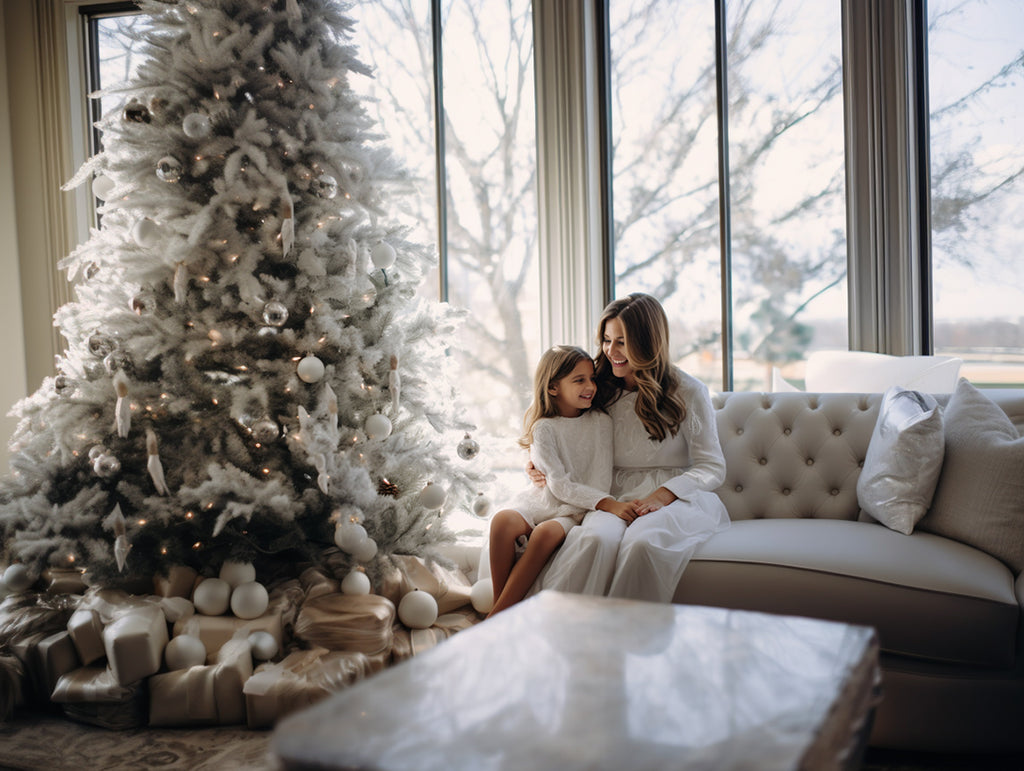
Flocking, in the context of Christmas trees, refers to the technique of applying a snow-like texture to the branches of an artificial or real tree. This process creates the charming, frosty appearance commonly associated with flocked trees.
Originally developed in the 1950s, this trend has grown in popularity, and modern flocking methods have made it easier than ever to achieve that perfect snowy look.
Key Takeaways
- A flocked Christmas tree features a snow-like texture on its branches, giving a winter wonderland appeal
- The flocking trend began in the 1950s and has evolved with improved techniques
- Choosing a flocked tree comes with considerations like care, benefits, and potential downsides
What is a Flocked Christmas Tree?
A flocked Christmas tree can make your home feel like a winter wonderland, even if you're living in a place where it's sunny all year round.
How magical does that sound? A flocked tree is simply a regular Christmas tree adorned with synthetic white snow.
This charming touch gives your tree that frosted appearance and adds an air of cozy nostalgia.
You might be curious about the history of flocked trees. They actually date back to the 1800s when people first began applying a snowy mixture to their trees.
Over the years, the trend has continued, with the snow-like substance evolving into the non-toxic, flame-retardant material used today.
But how do they achieve this flocked look? The process is quite fascinating.
Flock, which is a white, powdery substance, is sprayed or brushed onto the tree's branches.
This method covers the needles in a gleaming white layer, creating a frosty effect that mimics snow.

Variety is the spice of life, so naturally, flocked trees come in many different shapes and sizes. You'll find pre-lit options and unlit trees catering to your preferences.
These eye-catching trees are available in various shades of green and can even be found in alternative colors like white or silver to match your unique holiday vision.
Caring for your flocked tree is similar to caring for a traditional tree, too. You'll want to keep it away from direct heat and monitor water levels so that the needles stay fresh.
Should you choose an artificial version, it'll last for years, giving you a hassle-free alternative to the real deal.
One thing to remember, though: flocked trees can shed a bit of their magical snow throughout the season. A small price to pay for bringing that enchanting winter wonderland vibe into your home, don't you think?
So, go ahead and embrace the snowy allure of a flocked Christmas tree for a holiday season that's both elegant and merry!
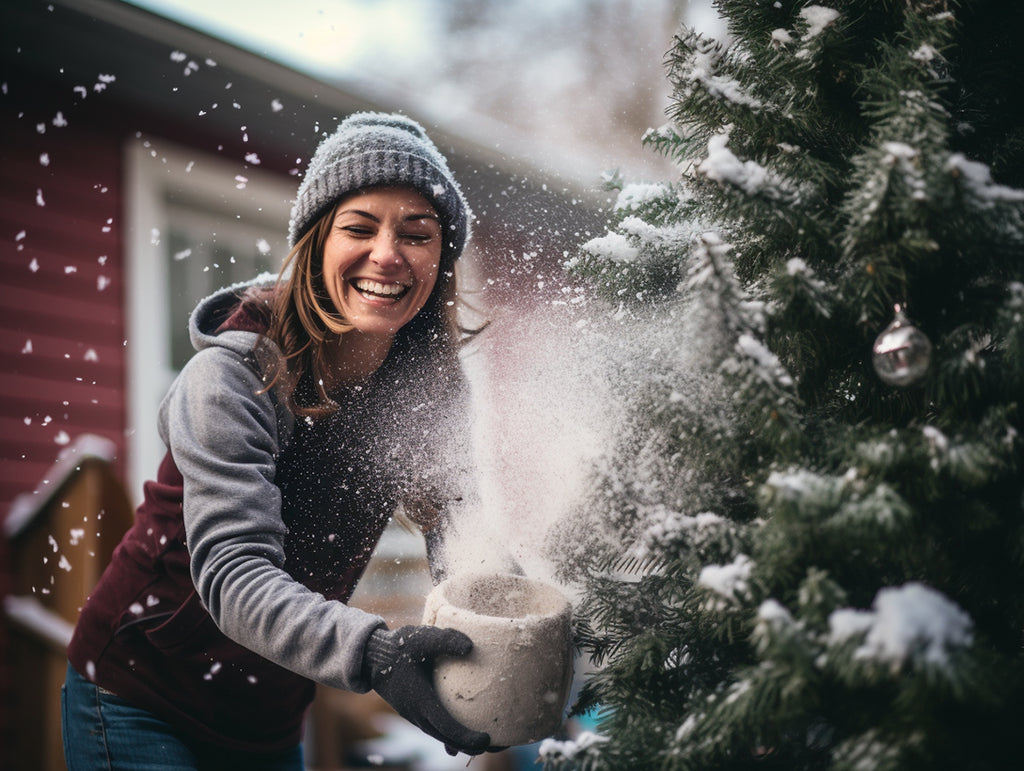
History of Flocked Christmas Trees
Ever wondered where flocked Christmas trees came from? Let's take a journey back in time.
The history of flocked Christmas trees can be traced back to the 1950s in America, making these trees a classic holiday companion.
Flocking, which involves the process of attaching tiny fibers to a surface, started as a way to create a snow-covered effect.
Who doesn't love a touch of winter magic in their Christmas decorations, right? Trials were conducted using various materials like cotton, corn starch, and even sugar to find the perfect look.
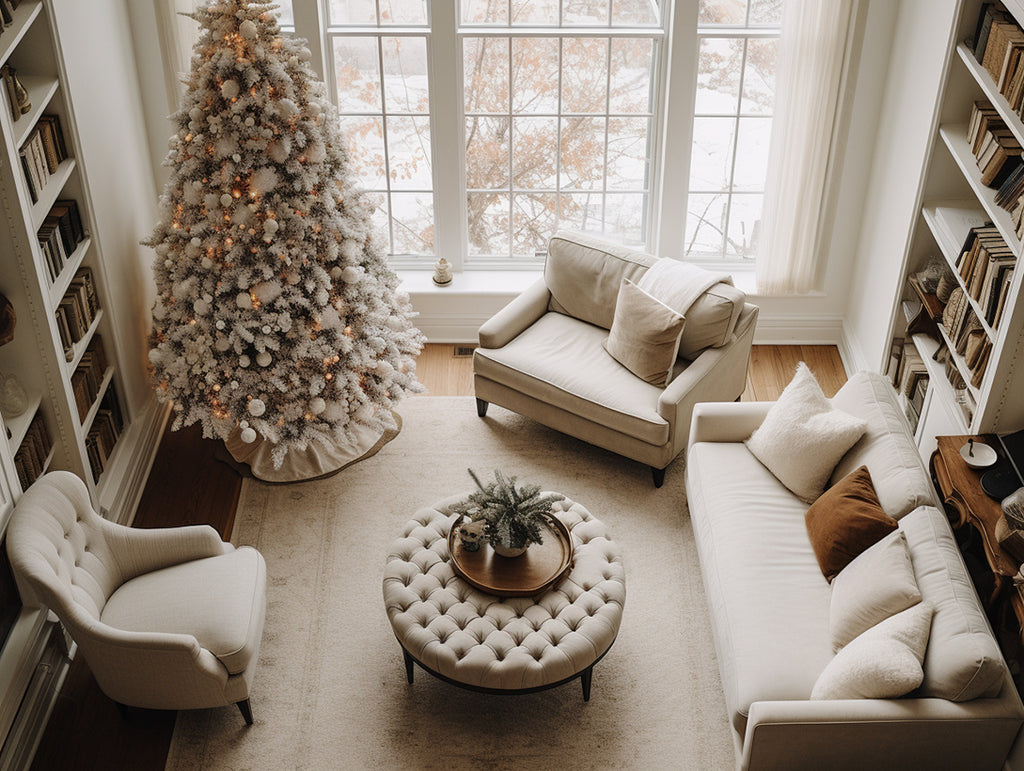
In the 1960s, flocked trees gained even more popularity when Hollywood celebs started embracing them. Marilyn Monroe was known to have a flocked Christmas tree in her home, and nothing says glamor like Marilyn!
Now, you can feel like a star just by having a flocked tree in your living room.
Over time, the flocking process evolved, and modern flocked trees feature a mixture of cellulose fibers, adhesive, and water. Today's flocked trees come in numerous styles, colors, and sizes to suit everyone's unique holiday style.
So next time you glance at your flocked Christmas tree, appreciate its fun-filled history and the little touch of Hollywood charm it brings to your home.
Happy decorating!
How are Christmas Trees Flocked?
Ah, the magical touch of frosty snow on your Christmas tree! But how do they achieve that snowy wonderland effect? It's called flocking, and here's how it's done.
Manufacturers apply a mixture of cellulose, adhesive, and boron to give your tree that irresistible snowy look. This blend creates the perfect wintry charm without the freezing temperatures!
The process starts by applying an adhesive spray to the tree's branches. Next, the flocking powder, typically made from cellulose, is sprinkled or blasted onto the sticky surface.
The flocking adheres to the branches, creating a realistic and lasting snow-like texture. Voilà! Your Christmas tree has transformed into a winter wonderland centerpiece.
But wait, there's one more crucial ingredient – boron! This element helps make the flocking flame retardant, ensuring a safe and enjoyable holiday season.
Some folks prefer to DIY their tree flocking for a more personal touch. You can easily find home flocking kits online or at craft stores.
The process is similar, but make sure you follow the instructions carefully! After all, you want that picturesque snowy scene without any mishaps.
So, when you're dreaming of a white Christmas and admiring your flocked tree, you can now appreciate the marvelous process that led to its enchanting presence in your home.
Different Types of Flocking
Flocked Christmas trees are popular for their beautiful, snow-covered appearance. Flocking refers to the artificial snow applied to the tree, which comes in various types.
Let's explore a few different flocking options to make your Christmas tree extra special this year.
Spray-on Flocking – This type is easy to apply and is commonly found at stores. You just need to spray it onto your tree branches, and voilà! Your tree has an instant snowy touch.
It can be a fun weekend project for you and your family.

Powdered Flocking – This type is a bit more time-consuming, but it gives a more realistic and fluffy appearance.
Mixing the powder with water creates a paste, which you then apply to your tree branches using a small brush or spray bottle. The final effect is well worth the effort.
Diving a bit deeper, here are the popular materials for flocking:
- Cellulose – Made from plant fibers, this biodegradable flocking material is eco-friendly and budget-friendly.
- Cotton – A soft, fuzzy option that creates a gentle snow effect on your tree. It’s less messy than other types of flocking, but it may retain moisture.
- Synthetic Fibers – Offers a wide range of textures, colors, and durability. It might cost a bit more, but the results can be stunning and long-lasting.
No matter which type of flocking you choose, you're sure to bring a touch of winter magic into your home this holiday season.
Remember to have fun while decorating and let your creativity flow!
Benefits of having a Flocked Christmas tree
First, there's no need to store extra decorations. The tree itself flaunts a beautiful, snowy look, creating a festive atmosphere.
Simply adding lights will make your tree absolutely stunning.
Secondly, it brings the feeling of a white Christmas, even if you live in a warm climate. No more dreaming of a snowy holiday; you'll have a winter experience right inside your home.
Less Mess! Flocked trees don't shed needles like traditional live trees. Enjoy a tidier Christmas season and spend less time on vacuuming and more time with your family.
Next comes durability and longevity. Flocked trees can be artificial or real and stay intact for many years.
Artificial flocked trees are reusable, while fresh trees retain their needles longer, providing less tree-related stress.
Let's not overlook the versatility. Whether you prefer a traditional or modern holiday setup, a flocked tree goes well with almost any décor style.
You can create your own unique look with confidence.
Safety is a prime concern. Artificial trees have flame-retardant properties, making them fire-resistant.
A safe and merry holiday is right at your fingertips.
In essence, flocked Christmas trees are visually appealing, low maintenance, durable, versatile, and safe. Consider a flocked tree this season and elevate your festive decorations.
Considerations when Choosing a Flocked Tree
When deciding on a flocked Christmas tree, you should keep a few key factors in mind. It's important to consider the tree's size, density, and color before making a decision.
First, think about the available space in your home. You'll want to choose a tree that fits comfortably in the designated area.
Second, consider the density of the branches and needles. A fuller tree will give you a more lush and cozy feel, while a lighter density will provide a more open and airy appearance.
Now, let's talk about color. Traditional flocked trees boast a snowy white appearance, but nowadays, you can find trees with different shades of flocking material.
Go for the hue that best complements your holiday décor!
Another thing to think about is the tree's construction. Pre-lit flocked trees can save you time and effort, while unlit ones allow for more customization in your lighting choices.
When it comes to storage, flocking can be delicate and needs proper care. Make sure to gently disassemble your tree and store it in a cool, dry place to maintain its snowy charm.
Finally, consider the overall quality and durability of the tree. A high-quality flocked tree may cost a bit extra, but it's an investment that will bring joy for many holidays to come.
With all these factors in mind, we hope you find the perfect flocked Christmas tree that adds a touch of winter magic to your holiday celebrations.
How to Care for a Flocked Christmas Tree
Choose the perfect spot: Find a location away from heat sources, like fireplaces and radiators, to avoid melting your tree's delicate flocking. Natural light is lovely, but keep the tree out of direct sunlight to preserve its pristine look.
Water wisely: A flocked tree needs less water than its non-flocked counterpart, but keeping it hydrated is key! Check the water daily, ensuring it doesn't go dry. Use a spill-proof watering funnel to avoid splashing water onto the branches.
Trim with care: Hang your lights and ornaments gently, being cautious not to damage the flocking. Avoid heavy or sharp decorations weighing down the branches or scraping off the flocking. Opt for lightweight heirlooms or dainty baubles.
Preserve freshness: A secret tip: Mix a preservative (water + sugar + and a tiny capful of bleach) to extend the life and vibrancy of your flocked tree! Add this to the water in the tree stand, and watch as it stays fresh and amazing throughout the season.
Sweep the floor: Don't forget to clean up! You'll likely experience some shedding of flocking on the floor, so simply use a vacuum or a broom to sweep it up. No need to worry; your tree will still look fabulous.
Recycle responsibly: Once the holidays end, parting can be such a sweet sorrow. When it's time to say goodbye to your flocked tree, dispose of it responsibly by following your local recycling guidelines.
You did your part in making the holidays magical, and now it's time to help the environment.
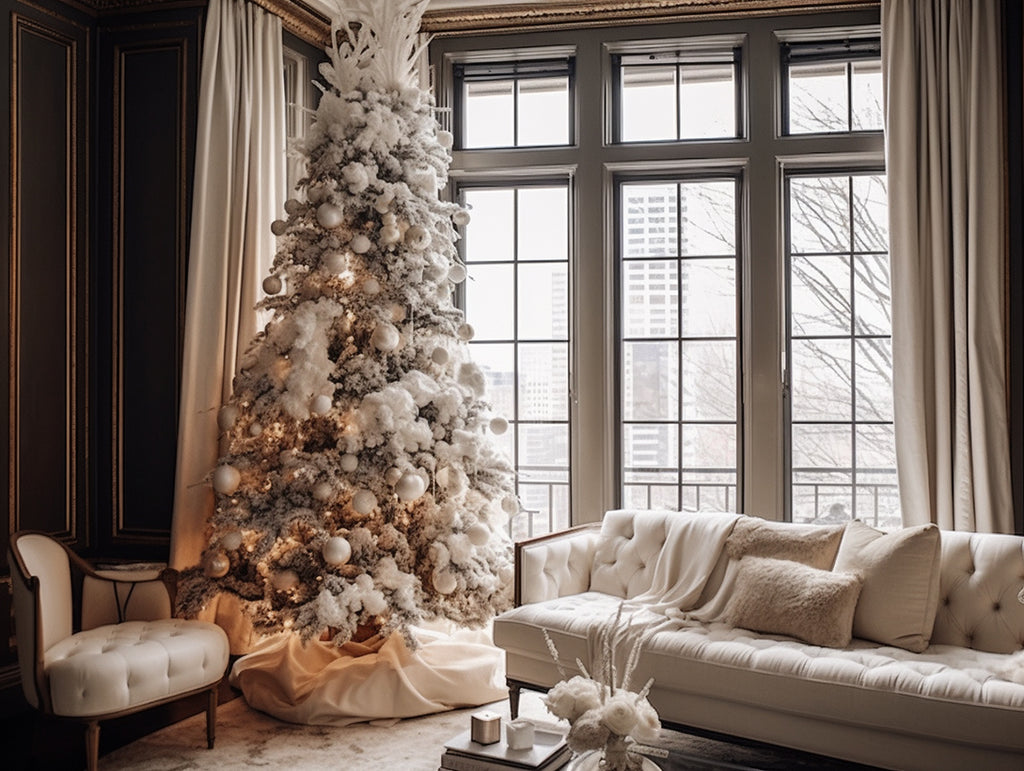
Possible Downsides of Flocked Trees
While flocked Christmas trees can be a beautiful addition to your holiday decor, there are some downsides to consider. One potential issue is the messiness of the flocking material.
As you set up your tree or move it around, you may find that flocking sheds and leaves a powdery residue behind. Don't be surprised if you need to vacuum or sweep up after the festivities!
Another drawback to be aware of is that flocked trees may not be as environmentally friendly as their natural counterparts. If you're someone who tries to reduce your impact on the environment, this may give you pause.
Flocking materials, often made of synthetic chemicals, can be difficult to recycle or compost, making it harder to dispose of these trees responsibly at the end of the season.

For folks with allergies, flocked trees could be a source of sneezes and sniffles. The flocking itself could potentially irritate sensitive allergies, especially if you're in close contact while decorating.
You could also encounter hidden allergens in the charming flakes, such as mold or mildew, that could develop if stored improperly.
Finally, flocked trees may not be compatible with some of your favorite holiday traditions. If you enjoy using real candles on your tree or stringing popcorn garlands, flocking could pose a fire risk or become damaged.
Make sure to check with the manufacturer's recommendations before incorporating flammable or heavy decorations.
So, while flocked Christmas trees can be a stunning centerpiece for your holiday celebration, weigh the potential downsides and decide if it's the perfect fit for you.
Happy decorating!

Where to Buy a Flocked Christmas Tree
Are you on the hunt for a flocked Christmas tree? The good news is they're widely available! Whether you're an online shopper or prefer visiting stores, options abound.
One popular choice is big-box retailers like Walmart and Target. They offer a variety of sizes and styles, ensuring you find the perfect tree for your holiday festivities.
If you're a fan of online shopping, Amazon and Wayfair are also excellent sources for flocked Christmas trees.
Here's a quick list of popular places to buy flocked Christmas trees:
- Walmart
- Target
- Amazon
- Wayfair
- Home Depot
- Lowe's
Want a more hands-on experience? Home improvement stores like Home Depot and Lowe's often stock flocked Christmas trees for the holiday season.
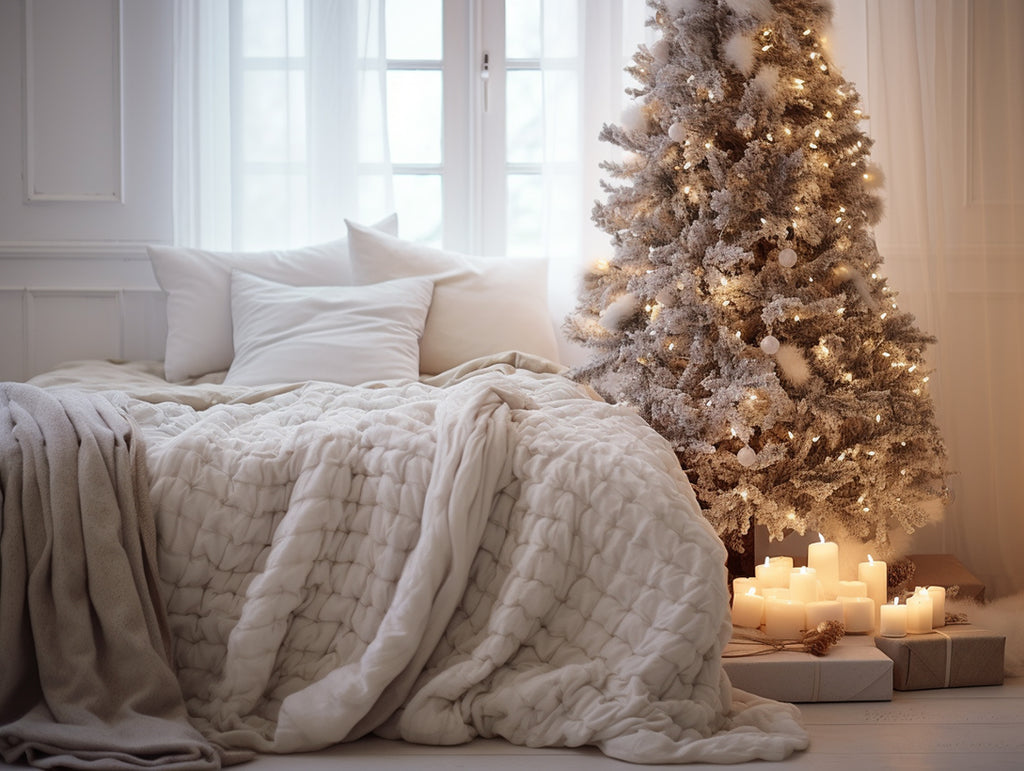
These stores provide the opportunity to browse and inspect tree quality and flocking consistency in person.
For a more festive shopping experience, try specialty Christmas stores and nurseries. These establishments may offer unique, hand-flocked options and a top-notch selection.
Plus, who doesn't love the charming atmosphere of a store dedicated solely to Christmas?
In summary, flocked Christmas trees can be found at big-box retailers, online marketplaces, home improvement stores, and specialty Christmas shops.
With so many places to choose from, you'll find that picture-perfect tree in no time. Happy shopping!
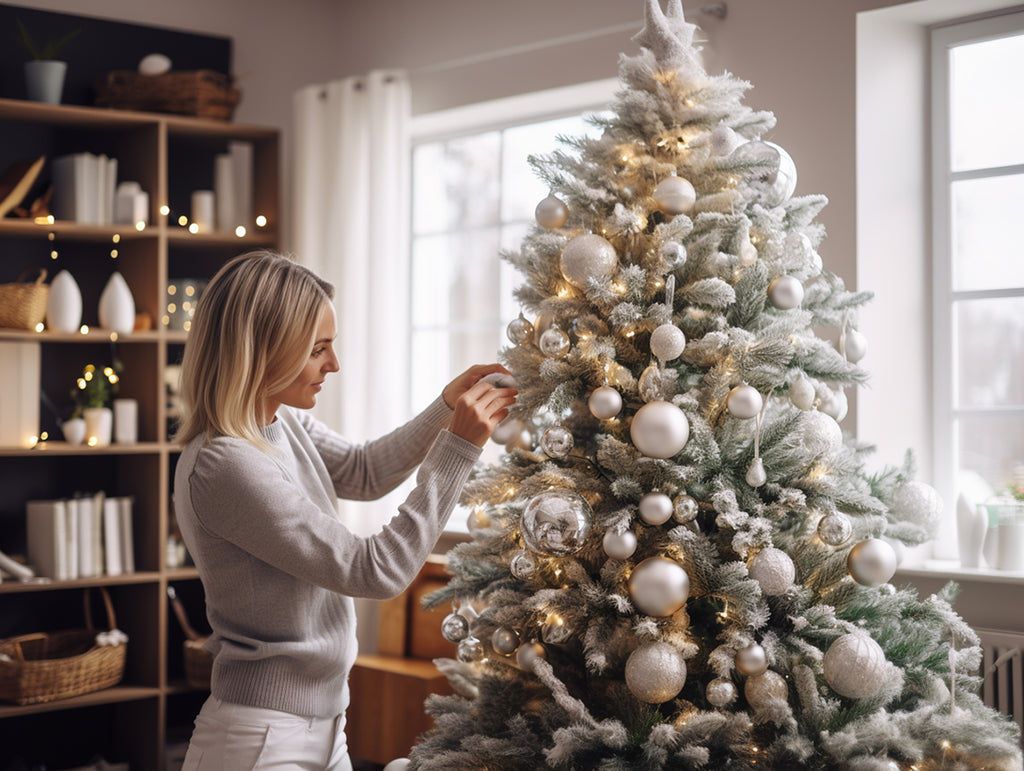
Frequently Asked Questions
How do you properly maintain a flocked tree?
To keep your flocked tree in good shape, dust it lightly with a soft brush. Avoid placing it near heat sources or direct sunlight, as it may cause premature fading.
Watering isn't necessary, as flocked trees don't need it! Just enjoy its beauty hassle-free.
What are some popular flocked tree brands?
King of Christmas, National Tree Company, and Balsam Hill are leading brands offering beautiful flocked trees. These companies are well-known for their high-quality, realistic designs that can bring a winter wonderland right into your home.
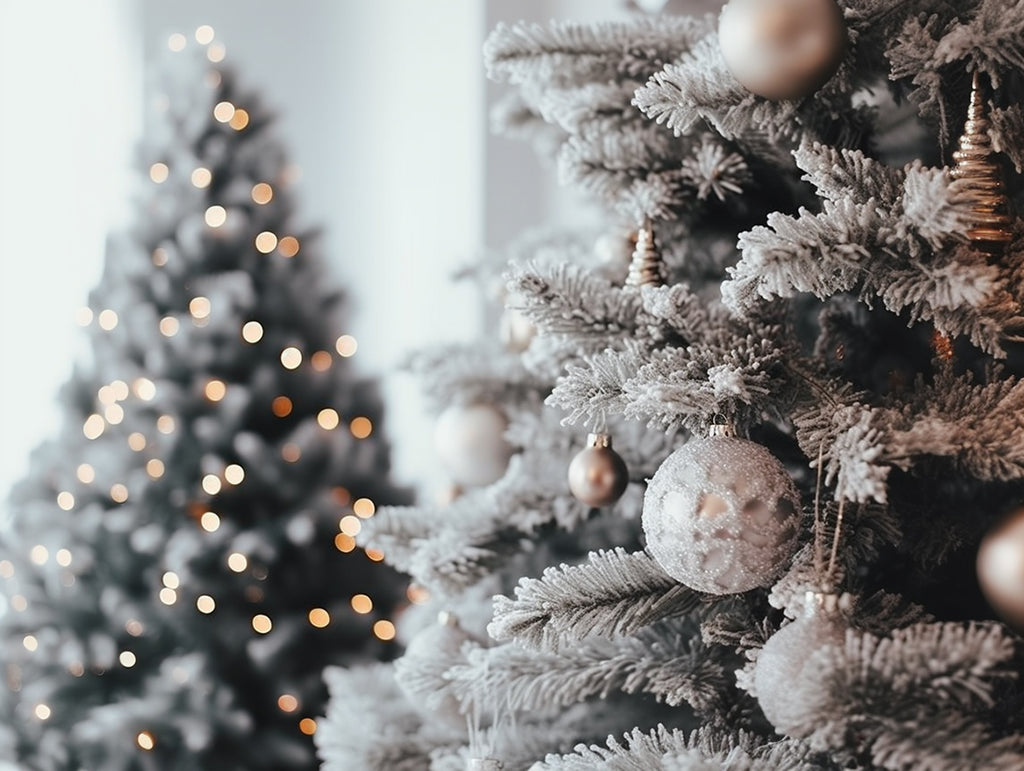
Can flocked trees be used outdoors?
Yes, flocked trees can be used outdoors, but choose one specifically designed for outdoor use. Remember to secure it well and follow the manufacturer's guidelines to ensure its durability in various weather conditions.
How do you decorate a flocked Christmas tree?
Less is more when it comes to decorating a flocked tree! Choose ornaments in lighter colors like silver, gold, and pastel shades, or opt for clear lights to create a sparkling, snowy effect.
A well-coordinated color scheme will enhance the beauty of your tree.
What is the difference between frosted and flocked trees?
Frosted trees have a light dusting of artificial snow, giving them a subtle wintry touch. Flocked trees, on the other hand, have thicker, longer-lasting coverage that creates a bolder, snowy appearance.
The choice depends on your personal preference and desired aesthetic.
What are some common issues with flocked trees?
Flocked trees can shed their artificial snow over time, especially when moved or touched frequently. The flocking material may also fade if exposed to direct sunlight.
But don't worry; with proper care and storage, your tree can stay pristine for many years.
Affiliate disclosure: We only endorse things we’ve personally curated and have bought or would buy ourselves. If you make a purchase using our referral links, we may receive a commission. However, there’s no extra cost to you.
